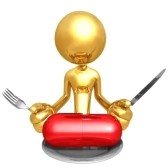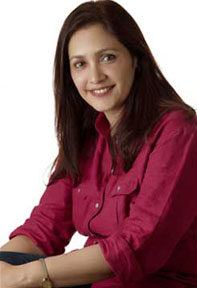-Dr Harshada Rajadhyaksha
-Dr Vipul Chavda
Lindsey Caroline Vonn (née Kildow) is possibly the best known downhill skier in U.S. history. Four time world cup champion, Lindsey is also one of the only six women to have won World Cup races in all five disciplines of alpine skiing. After suffering a knee injury in February 2013 and undergoing a surgery as well as extensive rehabilitation, she still reinjured the same knee and had to pull out of the Winter Olympics at Sochi in February 2014. We have followed her progress from her blogs, twitter, news articles, and interviews given by her, as well as those working with her. We wish to put facts and evidence together and examine if the outcome could have been different if the decision-making and management of injury was logical instead of emotional.
TIMELINE OF LINDSEY’S INJURY as available on her Facebook & Twitter Page:
On the 4th of February 2013, in the opening race of Super G at the Alpine Skiing World Championship in Austria, she had a horrific fall resulting in a terrible injury to her right knee. Examined by Dr. Christian Kaulfersch, she was diagnosed to have a partial tear of the Medial Collateral Ligament, a complete tear of the Anterior Cruciate Ligament, and a Lateral Tibial Plateau fracture: what purports a COMPLEX KNEE INJURY. As is the protocol in such injuries, he advised her to wait till the acute inflammatory reaction and bruising of the bones subsided, and to later undergo a surgical reconstruction of the ACL. In fact Dr. Christian Kaulfersch described her injury as a “career delaying” and not a “career threatening” one.

The US Ski team management decided to consult doctors in USA, and Dr. William Sterett, who was Lindsey’s Doctor since she was 13 years old, immediately operated her knee (on the 10th of February, 2013), reconstructing her ACL, repairing her MCL and leaving the fracture to heal on its own.


Amid speculation on her return to competitive sport, the surgeon predicted a return to the mountains in 9 months, and preparing for the winter Olympics at Sochi was definitely on Lindsey’s mind. Dr. Tom Hackett, an orthopedic surgeon at the clinic and the team physician for the U.S. snowboard squad said, ”I think so, I would be very optimistic she could come back strong. She’s a fierce competitor. She’s a fighter and chances are that she will, I would think, essentially take all of that athletic energy and put it into her rehabilitation. There’s a really good chance she could come back as strong as ever.”
Lindsey went in to rehab.
Immediately after surgery her questions were all to do with whether she could start exercising her upper body and core while the knee healed from the trauma of the surgery.
She was on crutches a lot longer than the usual ACL reconstruction patient because of the Tibial Plateau fracture that had to heal. In these 6 weeks Lindsey was already going in for rehab and gym training for the upper body and core.
The crutches came off on March 27th 2013 (6 weeks post-op)

On 30th March 2013, Lindsey spoke to John Meyer of the Denver Post:
“The more time goes on, the more confident I am that I’ll be ready for Sochi,” Vonn said. “I was a little bit nervous before the surgery, but every day since then the confidence has just gotten better and better. I have plenty of time, so I just have to make sure I do the rehab like I’m supposed to, and I don’t have any setbacks. I should be perfectly on time to be skiing, hopefully in the first speed races of the season.”
“If I’m not ready, I’m not going to race,” Vonn said. “I would love, love, love to race at home, to race on the new world championships course. The timing is really not ideal. If I’m not ready, I’m not going to push it, because next year the main priority without a doubt is the Olympics. I think since I live here, I’ll probably have a chance to ski on the course again before world champs, so I’m not worried about getting time on it, I just would love to race at home another time. But I’m going to make sure I’m 100 percent before I start racing, and I’m not going to do it sooner no matter what.”
Of course, competing at the highest level in February meant that she had to be ready for arduous work in the mountains at least 6 months before that, and all the rehab planning was done in reverse to achieve that Feb 10th 2014 Olympic goal. Here was “an athlete with a clear goal, and an understanding of what it takes to get there”.
By first week of APRIL she was doing free squats with the Knee brace. (2 months post-op)

On 3rd May 2013 (11 weeks post-op), Lindsey announced that she had “dumped” her knee brace and would be back on the slopes in September. “I’m still in rehab, things are going really well. The knee is coming along quite nicely. But I should start skiing in September and everything’s right on track for the Olympics in February…” “I just dumped the brace. This is my first trip without the brace, so I’m really excited. But, unfortunately my doctor wants me to ski with it for a while, so still gonna be difficult. I can’t get rid of it entirely, unfortunately.”
By 3rd week of MAY 2013 (15 weeks post op) she was on SMITH machine, squatting with weights, and progressing fast.

In a 29th May meeting with her surgeon, she found out that her progress was good, and she was progressing her workouts to include functional elements in the next few weeks
By 1st Week of JULY 2013 (5 months post-op) she was doing plyometric training in the Austrian ALPS
By 2nd week of JULY she was pictured training on rope for balance.

This picture on the 4th of August (6 months post-op) shows her in a high-load squat

And then progressing to sport-specific functional training (skiing)




On the 28th of August (6 ½ months post-op), Lindsey spoke to John Meyer of the Denver Post again, saying that the strength of her right knee was measured at 98% of the Left knee and that she had been cleared to start snow skiing. She was off to Portillo Chile, where her surgeon Dr. Bill Sterett was going to monitor her. Vonn’s trainer Martin Hager commented that “She’s doing great, we are happy with the progress. It looks good for starting ski training that will be the focus for the first few days. Just skiing without any pain. No reaction of the knee. That will be the most important factor.”
On 31st August 2013 (less than 7 months post-op, and 2 months before the Doctors had predicted an on-snow return) Lindsey did a few light runs on the snow, and on 1st. and 2nd September upped her training, saying SHE IS BACK!

“I knew I would get to this point. I just didn’t know how long it would take me,” Vonn said. “I didn’t know how fast or slow the recovery process would be. But I always knew I’d be back. I never really doubted it. I’m really happy that I’m finally 100 percent and I’m not injured anymore.” She said.
In October she trained in Europe, but decided against competing in the World Cup opening event at Soelden in Austria. “My training camp in Soelden went very well and I made great progress, but I feel that I need more training before I start racing again,” she reported on her website from her home in Vail, Colo. “The Soelden race is not in the cards this year.”
She trained downhill for the first time since her crash on Nov. 6 and, two days later, said she felt healthy enough to win a World Cup super-G race.
Vonn said she’s reluctantly been wearing a protective knee brace under doctor’s orders, according to The Associated Press.
“It’s in my best interest to play it safe,” Vonn said, according to the AP. “I compromised and said that as long as I don’t have to wear [the brace] for the Olympics, I’ll be fine.”
In a training crash on the 19th of NOVEMBER 2013, she suffered a partial Rupture of Reconstructed ACL and decided to rest for a few days and undergo “aggressive physical therapy” before deciding further action.

She was allowed to continue training with a hope that she will compete at Sochi, but on 21st December 2013 in France at the Women’s World Cup Downhill event her knee “gave way”. ”The thing is I have no ACL. So unless I get surgery there’s nothing really magical that I can do that’s going to make it better. My knee is loose and it’s not stable and that’s the way it’s going to be from here on out. I just have to get used to it,” Vonn stated that no new damage had been done to the surgically repaired knee and her plans for the Sochi Olympics, in seven weeks, were still intact.
But on 7th January 2014, without competing or skiing again after the December 21st setback, Lindsey announced that she would not compete in the Olympics. On the 15th of January 2014 she was re-operated, this time by another surgeon, Dr. Jim Andrews, and again with the goal of competing in February 2015.

OVERVIEW OF INJURY HEALING:
When there is any injury, there are two outcomes:
- Loss of Anatomical continuity
- Loss of Physiological Function
Immediate care after any acute injury is aimed at maintaining anatomical continuity or restoring it. Treatment choices hence depend on the type of tissue damaged, the severity of disruption of anatomical continuity, and the ability of surgeons to repair damaged tissues. When an ACL injury occurs, the velocity of the injury or the forces that act on the loaded knee, and the anatomy of the involved structures, is such that it almost never occurs in isolation. In the case of Vonn’s injury also, she suffered a complex and severe injury to the knee involving the ACL, The MCL, and the Tibia, and It is obvious that there must have been substantial bone bruising associated with the injury. In her case the surgeons had the choice (and ability) to RECONSTRUCT the ACL, REPAIR the MCL, but the bone bruising and the fractured Tibial surface do not require surgical intervention for healing and must be left alone to heal. The time required for such healing is the same in all humans, irrespective of occupation and fitness levels. Bone injuries take between 3 weeks-6 months to heal, depending on the extent of injury. The Doctor in Austria had advised a waiting period before opting for surgery. This would allow complete healing of the damaged bone tissue, and ensure that the graft tunnel will not widen after reconstructed ACL grafting.
Though arthroscopic reconstruction of the ACL has been projected as a “sports surgery”, this suggestion actually comes from the fact that the injury often occurs in sporting activity. The primary aim of the surgery itself is not to allow early return to sports, but to slow down the onset of Osteoarthritis by improving the functional stability of the lower limb. In fact the reconstructed ACL can never accurately mimic the role of the original ACL especially in extreme sports, unless (if at all) supported by a gradual, graded, and long term rehabilitation program that concentrates on phasic execution of realistic goals corresponding to the body’s physiological healing processes.
In Vail, the Doctors opted for an early surgery for Vonn. Though there is a school of thought that advocates early surgical intervention promising better outcomes, in the case of Vonn, the choice of an early surgery was probably taken so that the MCL could be repaired with a good prognosis, and the hope that she would be able to make a comeback in time for the winter Olympics in Feb 2014. If the ghost of the Olympics was not looming large, the Doctor would probably do the MCL repair and then post the ACL reconstruction as a second stage surgery after at least 3 months.
SOME SCIENTIFIC FACTS ABOUT ACL RECONSTRUCTION
The graft for the reconstruction can be taken from Patellar Tendon or Hamstring Tendons.
The HAMSTRING (Semitendonosus/Gracilis) Graft:
- Is technically stronger than the patellar tendon used in the BPTB (bone patellar tendon bone) technique. However, the BPTB offers a bone to bone interface which heals faster than the tendon to bone interface in the Hamstring graft which requires more protection in the early stages of rehabilitation.
- Published research documents that Strength gain of DONOR area (Hamstrings) takes more than 12 months to regain original strength.
- This technique requires development of specific surgical skills due to certain aspects distinctive to the surgical procedure: Harvesting of the graft is a blind procedure; the position and size of the tunnel needs to be very accurate as the hamstring tendon is thinner than the patellar tendon used in the other procedure; the length of the graft is important to ensure long term stability of the knee; at the donor site, during the surgery there is a possibility of damage to the saphenous nerve which can lead to RSD, and a possibility of damage to the MCL due to its proximity to the pes anserinus complex.
When planning rehabilitation after any injury, the first rule is that it has to go parallel to the tissue healing stages. Rehab cannot significantly hasten tissue healing, but done erroneously can in fact significantly hamper it. Decisions regarding treatment options, surgeries, and accelerating the rehab process, when taken backwards keeping a sporting date in mind, are a recipe for failure because we are dealing with human tissues.
PLANNING A REHABILITATION PROGRAM:
When planning rehabilitation after any injury or surgery, accounting for factors that affect rehab gains is important for its success. Some of these factors are listed here:
- Age
- Sex
- Previous Fitness Level
- Duration of immobilization/ Detraining
- Amount of wasting
- Profession/ Level of fitness required
- Operative status and special aspects
- Amount of joint degeneration
- Level of commitment
- Psychological status
- Area affected/ part to be treated
- Length of commute for profession
- Body Weight
- Nutritional status
DISCUSSION:
- Tissue healing is a process more or less equal in all humans of a similar age and circumstances, and cannot be hastened significantly if at all. If the goal of participation in Sochi Olympics was not the crux of decision-making, the surgeon would have either repaired the MCL and immobilized the knee, or just immobilized the knee in a knee brace with 20 degree Flexion for 3 weeks, along with a non-weight bearing gait. During this period, hip strength could be maintained with exercises with brace on, knee ROM and T band non weight bearing exercises for the knee and ankle, as well as core exercises could continue
- After a period of 4-6 weeks, the GII (Generation II) brace which was locked at 20 degree flexion would be progressed to full range of knee ROM, and strength of hip, knee, and ankle could be worked on, first using Therabands, ankle weights and machines, and later adding closed chain exercises. At the end of 3 months, girth of the thigh and calf should be equal to the normal leg, and pain should have subsided completely.
- At this stage, an ACL reconstruction surgery could be planned. Delaying the ACL surgery for 6-12 weeks would have allowed for the bone injuries to heal and the inflammatory processes to quieten. Again a knee brace locked in Extension and a non-weight bearing gait will protect the new graft, full weight bearing with the brace on can start by the end of the first week and at the end of 3 weeks, the patient would have achieved full ROM of the knee with brace on. During this phase, besides work on ROM, basic strength of knee muscles, core, etc can continue.
- The Hamstring graft has an interface with the bone tunnel, and as bone tissue will continue to repair and strengthen around the graft for a period of 3-6 months, the graft actually needs to be protected through-out this period to varying degrees. During this period, working on girth and strength before starting excessive functional training is imperative to avoid erroneous neuromuscular patterns that may get carried forward into the sporting performance. Traditional exercises to improve girth should be the mainstay of rehab through this period, and a few elements of stable functional training (like squats, single leg VMO, etc.) can be added for variety and developing proprioception and balance. Vonn is seen participating in plyometrics and advanced functional training with high loads though her thigh girth looks poor: too much too early.
- Research shows that girth and strength will not improve during inflammatory phase of healing (first 3 months after surgery), no matter what is done, and the real strength, power, and muscle mass gains will only come after the tissue healing is complete. This tissue healing process is pre-determined, and cannot be shortened/ bypassed. The Hamstrings being the donor tissue for the graft, may require 6-9 months of specific strengthening post-operatively, before beginning to train them functionally. Downhill Skiing requires excellent eccentric control of the knee by the Hamstrings, and enough time should have been spent strengthening them before any skiing was attempted.
- After the protective period of 6 months post-operatively, at least another 3 months should be spent in progressive functional training, introducing sport-specific drills at this stage, and simultaneously continuing strength exercises to improve girth. In a highly demanding sport such as downhill skiing, the kind of muscular control (and endurance) required cannot be measured in artificial/ simulated environment. (Ideally, the first time Vonn should have ventured on the slopes for the simplest of drills is 9-12 months after surgery, or 12-15 months after her fall, i.e. Feb-May 2014). When the knee was measured at 98% of the normal, it must be remembered that the testing is done in a clinical set-up, and cannot mimic sporting demands.
- No grafted tissue can actually function exactly like the original ACL, and in any high risk sport like skiing enough time must be given to rehab and functional training before attempting competition. Ideally Vonn should have continued strength and functional training while increasing practice time on the slopes, adding challenging elements and speed for the next three months before considering competition (Ideal target: Oct-Nov 2014)
 |
 |
Original Anterior Cruciate ligament as shown is FAN shaped and made up of 3 bundles arranged spirally making it UNIQUE and designed to control tibial rotation along with its anterior translation during knee Range of Motion (like a single chariot driven by multiple horses).
Whereas the reconstructed ACL is nowhere near the ORIGINAL structure and can never replace the ACL, especially in its rotatory control (imagine if the chariot is now led by a single horse).
This unique difference makes it very important for “OTHER FACTORS” to be involved in the control of Tibial Rotation.
The Hamstrings with their anatomical Orientation are the KEY to assist the newly reconstructed ACL in controlling the tibial rotation.
When the Graft is from the HAMSTRINGS then, we must remember that the time it will take to regain the eccentric and peak strength in the full range will be a minimum of 1 year. The Hamstrings work eccentrically in most sporting activities (especially in events like downhill skiing), and will require a lot of patience in rehabilitation to regain their “PEAK STRENGTH”.
| Time |
What should Have Happened |
Clinical Reasoning |
What Actually Happened |
| 4th Feb 2013 |
Injury: ACL, MCL, Tibial Plateau # |
4th Feb2013-4th May 2013
(1st 3 months) |
Immobilization, possible repair of MCL, delay ACL reconstruction for 3 months, continue with strengthening and ROM |
MCL needs early repair, 3 months wait gives enough time to heal all bone bruising and Tibial plateau # |
Early reconstruction of ACL along with MCL repair, progressed to squats with brace on, and “dumped brace” on 3rd May 2013 |
4th May 2013-4th Aug 2013
(3rd-6th Month) |
Planned ACL reconstruction, followed by a “protective stage” with brace on, gradually progressing ROM and strengthening with open and closed chain exercises. Work on strength and GIRTH along with ROM. Core and upper body strength development. |
Strong and healthy bone tissue ensures tunnel integrity, protecting new ACL with brace and planned progressive strengthening ensures proper “strengthening” of bone tissue over new ACL |
Smith Machine squats without brace, Functional training, Plyometrics by July 2013, and high load squats by 4th August. In fact even though Lindsey is able to perform all these moves, the “girth” of her thigh still looks less. |
4th Aug 2013-4th Nov 2013
(6th-9th month) |
Remove brace, Continue to develop GIRTH, start focusing on Hamstring strength, introduce various functional training moves while still continuing traditional strength training. Cardio elements can be cycling and swimming initially, adding elliptical trainers and step work later. “Active” flexibility training to be added. No plyometrics till strength and girth are satisfactory. |
Though the “protective” phase is over, we wish to continue guarding the new graft through these 3 months till the hamstring strength is somewhat satisfactory to improve rotatory and eccentric control, and bone healing is complete. Girth will still be developing and we do not want erroneous neuro-muscular patterns established. |
31st August Lindsey was on the snow for the first time, brace was on (unhappily for her), the Doctors were only checking for “pain and swelling” while she skied, everyone was satisfied with the progress; in fact her knee “strength” measured at 98% of normal. She chose not to compete as she “Felt she was not ready”, but continued to practice. |
| 4th Nov 2013-4th Feb 1014 (9th-12th month) |
Build eccentric strength of Hamstrings, add various functional elements, sport specific drills including low velocity torsion loads, increase strength of all lower body and core muscles, focus on building girth, add linear sprint drills and towards the end of these three months go back on the snow, with the brace on initially. Continue flexibility drills |
After girth and strength have developed sufficiently, the development of skill requires training neuromuscular control and establishing desirable recruitment patterns. The amount of eccentric control required will be available at this stage as strength and girth have improved. |
After being on the snow since the end of August, Lindsey trained for downhill skiing on 6th Nov 2013, and immediately felt confident. She suffered a training crash on 19th Nov 2013, and partially tore her operated ACL. After a few days rest and rehab, she suffered a second setback when on Dec 21st 2013 her knee “gave way” in a world cup event in France. On 7th Jan 2014 she announced that she will not compete in Sochi.
Re-operated on 15th Jan 2014 |
Feb 2014-Sept 2014
12th-19th month |
Plyometrics and speed drills periodically increasing velocity, power training, continue basic strength and active flexibility training. More work on the slopes and sport drills on snow. |
Ready for competition by Aug-Sept 2014, but can continue preparing till the competitions start toward end of October. |
|
| October 2014 20 months after injury and 17 months after ACL reconstruction |
Strong and ready for competition. |
|
|
“Ability to complete a task does not guarantee true single tissue/ muscular strength especially in the case of a highly motivated elite athlete with above average overall strength and stamina”. Lindsey Vonn is an elite athlete and a strong woman, and she is seen performing well throughout her rehabilitation program, and later also in practice on the slopes. But was she ready for each stage of the rehab? Was the decision making unbiased and scientific? Was she actually benefitting from all the progress that she was seen making? After all wasn’t she herself a little unsure when she pulled out of competition in October?
We believe that she would have fared better if the focus was on the process of healing, strengthening and preparing; not so much on the dream of the Olympic gold.
Disclaimer:
This article is ONLY meant to create an interest and educate physiotherapists (and anyone else that is interested) in the long term rehabilitation of sportsmen after an ACL surgery. The views expressed in this article are solely those of the authors, and are based on their long experience in the field as well as published research articles which can be provided as references.
The article is not meant to defame/ humiliate/ hurt anyone’s feelings or doubt anyone’s clinical judgment or ability in any way, and the authors apologize for any misunderstanding caused. We have not seen/ examined/ been privy to Lindsey Vonn or any of her medical reports, and all the material, photos, information we have gathered is from what is available freely on various electronic media.
Any comments that are made as a response to this article are the sole responsibility of their individual authors. Therefore we cannot be held responsible for any such comments.
If any reader finds any content malicious/ harmful/ sensitive/ hurtful, please do contact us at info@prakrutihealth.com and we will rectify the problem.




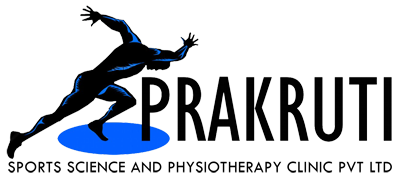





























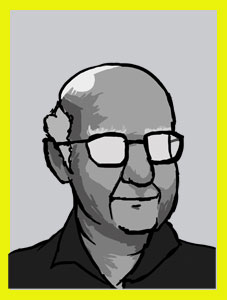
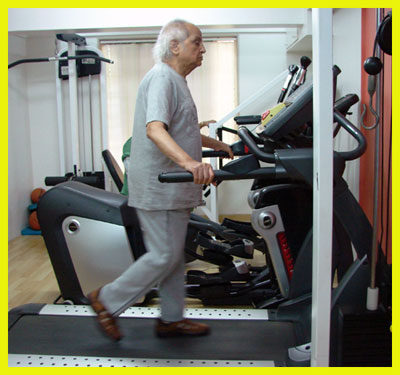
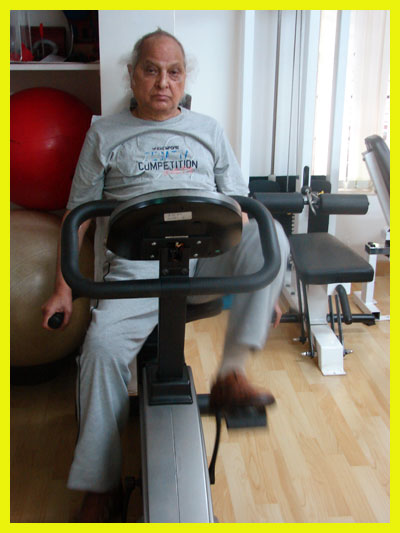

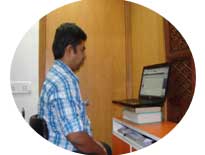

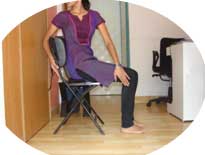
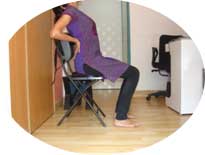
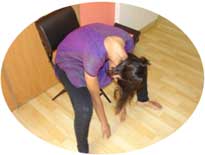


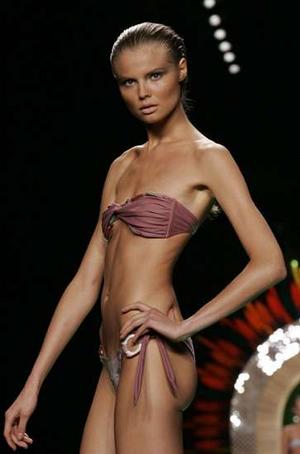
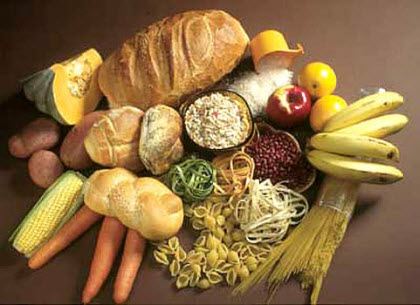 Carbohydrates are one of the three macronutrients (“macronutrients are nutrients that the body requires in relatively larger quantities as compared to “micronutrients” required in smaller quantities). The three macronutrients being, Carbohydrates, Proteins, and Fats. Obviously, carbohydrates are required in a large quantity by the body.
Carbohydrates are one of the three macronutrients (“macronutrients are nutrients that the body requires in relatively larger quantities as compared to “micronutrients” required in smaller quantities). The three macronutrients being, Carbohydrates, Proteins, and Fats. Obviously, carbohydrates are required in a large quantity by the body. What needs to be completely eliminated from a “weight-loss” diet, are the calories coming from sugary snacks, desserts, biscuits and bakery items, breads made from “maida” or highly processed cereals. These are also carbohydrates, but completely “empty” of any nutrients, dense in calories and fats, and sometimes the dreaded “trans-fats”! They also tend to be devoid of fibre; and eaten at the expense of fruits and vegetables, can lead to other digestive problems. I would also like to point out that alcohol is also a modified carbohydrate, and so are all aerated drinks and other juices!
What needs to be completely eliminated from a “weight-loss” diet, are the calories coming from sugary snacks, desserts, biscuits and bakery items, breads made from “maida” or highly processed cereals. These are also carbohydrates, but completely “empty” of any nutrients, dense in calories and fats, and sometimes the dreaded “trans-fats”! They also tend to be devoid of fibre; and eaten at the expense of fruits and vegetables, can lead to other digestive problems. I would also like to point out that alcohol is also a modified carbohydrate, and so are all aerated drinks and other juices!